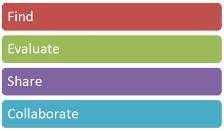Geospatial Commons Workgroup

This workgroup was officially sunset 12/2/15 since the Minnesota Geospatial Commons is now operational.
The workgroup's mission
was to define and facilitate the implementation of
a Minnesota Geospatial Commons. The Commons was envisioned to be a
coordinated, next-generation site that would allow users to find, view and
download data; publish metadata and data; and find and use web services and
applications. Additional proposed functions of the site included:
web service ratings and monitoring; back-end broker that connects
applications to web services; user reviews of data and web services.
The workgroup was a joint effort of the MetroGIS Technical Leadership Workgroup and the
Standards Committee. It
included the organizations that had developed the DNR Data Deli,
MN Geographic Data Clearinghouse, and DataFinder, along with other staff
from state, regional, and county government.
This workgroup laid the groundwork for the current
Minnesota Geospatial Commons
which became publicly available July 1, 2014. As the Commons
develops, it is becoming the one main location where people can find and share
geospatial resources in Minnesota, replacing previous major Minnesota
geospatial data discovery sites.
Important Links
-
Minnesota Geospatial Commons
-
The Minnesota Geospatial Commons: A vision, Jan. 5, 2012 (22 slides,
700 K, PDF)
-
Web
Services Requirements report:
- Clarifies what comprises a comprehensive documentation of a web service
- Determines key characteristics needed to achieve "trust" in a web
service
-
The Workgroup created a test site using Esri's Geoportal Extension v.
9.3 that implemented some, but not all, of the
desired functions of the Commons. The group
then recommended next steps which included developing a project plan for a production version
and seeking approval of the plan by stakeholder agencies.
- Test Implementation Status Report to Project Sponsors, 2/24/11
-
Workgroup's final status report (page 11), Nov. 7, 2012
Work Plan 2010-11
Check the Project Plan (pages 6-7, updated 6/7/10) and the most recent meeting materials (in next section below) for progress on the workplan.
- Commons (previously called a Broker or Portal)
- Refine list of functions.
- Prioritize functions (click here for the current list of priorities)
- Create a collaborative work site for our workgroup.
- Compare prioritized desired functions to off-the-shelf product capabilities.
- Compare prioritized desired functions to existing portal/broker/commons sites.
- Research activities in progress in other states, and internationally, that can be leveraged for this project.
- Determine if an off-the-shelf product could be used in whole or in part or if an existing site could be copied or used to meet the highest priority needs. If so, is additional design work needed to meet all desired functions?
- Research sources of funding.
- Recommend a course for achieving a preliminary version that exemplifies what is ultimately wanted, even if not all functions are operational.
- Implement a test-bed broker as a first step in understanding the needs and as a way to “kick the tires” on at least some of the desired back-end functionality.
- Include an assessment of user needs to clarify the functionality that users really want (so we are not building something we don’t need).
- Set a course for production of a complete commons.
- Web Service Trust Issues
- Clarify what comprises comprehensive documentation of a web service.
- Review lessons learned from the GeoService Finder project, in particular, that project team’s investigation of best practices and standards promoted by the OGC, FGDC, etc.
- Review services portion of the North American Profile of the ISO metadata standard.
- Agree on a list of key characteristics that must be addressed to achieve “trust” in a web service.
- Further define the roles of the Broker (both machine and human) and the Enterprise Service Provider with respect to quality of service and trust.
- Develop or find a template or model for service level agreements (SLA).
- Work toward an SLA for the MnGeo image service.
- Clarify what comprises comprehensive documentation of a web service.
- Communication
- Articulate the benefits of sharing services and of achieving a system that effectively supports sharing of services.
- Let federal partners, NSGIC and others know what we are doing. They may have
valuable input or assistance.
Meeting materials
Publications and links
-
Minnesota State GIS
Enterprise Conceptual Architecture Design, March 2005. This document
defines a high-level architecture for information technology and
web-mapping interoperability in support of the goals outlined in the
state’s strategic plan for GIS: the Minnesota Spatial Data
Infrastructure. The structural design proposed would promote
interoperability among GIS data and application providers, increasing
efficiencies and reducing long-term costs in data resource and software
application development. (22p., 178K., PDF)
- The Case for a Minnesota State
GIS Enterprise, September 2006. A non-technical introduction to the Conceptual
Architecture Design document, including an example of the benefits that such
an architecture would provide. (8 p., 67K, PDF)
- The Case for a Minnesota State
GIS Enterprise, September 2006. A non-technical introduction to the Conceptual
Architecture Design document, including an example of the benefits that such
an architecture would provide. (8 p., 67K, PDF)
-
GIS/LIS News article about the workgroup and data site survey (survey
ended June 30, 2010)
Return to GAC Standards Committee

